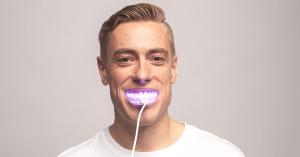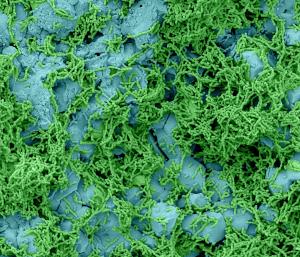
Technical mouthwash helps prevent oral diseases
Light-activated technical mouthwash combats pathogenic dental bacteria and prevents dental diseases without negatively affecting the oral microbiome.
ADELAIDE, AUSTRALIA, February 26, 2021 /EINPresswire.com/ -- Dental plaque is the root cause of many oral health problems. It is a sticky, colourless to light yellow film that forms on your teeth daily. The buildup of plaque leads to the formation of minerals called tartar. Tartar usually builds up above the gum line and eventually irritates the gum, causing inflammation leading to gum diseases.More often, Chlorhexidine is the over-the-counter (OTC) antiseptic mouthwash prescribed by dentists to treat bleeding and inflammation caused by gingivitis. However, Chlorhexidine is not suitable for prolonged use as it comes with side effects like taste alteration, teeth staining, and tartar formation. It also has an antibacterial effect that affects the whole mouth. This disturbs the oral microbiome. Chlorhexidine can only be used for a maximum of two weeks at a time.
The good news is that scientists have a new method for combating oral pathogens in dental plaque. The new technical mouthwash is based on light activation of oral rinse, also known as photodynamic therapy. The technical mouthwash is intended for local treatment of oral pathogens and preventing oral diseases such as periodontitis and cavity formation.
Technical mouthwash differentiates from other mouthwashes with its light activation. The antibacterial effect is stronger than with other antimicrobial mouthwashes and is directed towards the dental plaque. The plaque-specific antibacterial does not affect the normal oral microbiome which is a common problem with regular antimicrobial mouthwashes.
Photodynamic Therapy (PDT) in Dentistry
The use of PDT in dentistry is increasing rapidly in treating oral diseases like bacterial infections, gum diseases, and oral mucositis -- an inflammation of oral mucosal tissue which is a painful side effect of cancer treatments. Phototherapy uses an agent (photosensitiser) and light to destroy bacteria at their cellular level.
PDT and Plaque
There is a lot of evidence of PDT antibacterial approach being highly effective against dental pathogens in dental plaque. Dentists have used PDT method for the treatment of gum disease and root canal treatment sterilisation.
Lumoral® technical mouthwash is the first device to utilise PDT method for the management of dental plaque. Using Lumoral prevents biofilm formation and oral infection. It is intended particularly for individuals who suffer from gum disease or cavity formation despite having a good oral hygiene routine.
Indocyanine Green (ICG)
ICG acts as a photosensitizer used in PDT. It is a green negatively charged colouring agent that produces a photothermal and photodynamic effect when activated with a specific light. Photothermal means that it releases heat energy when exposed to light and photodynamic means that part of the absorbed energy is released as singlet oxygen.
Photosensitizers are inactive preparations that need to be exposed to light to trigger their antibacterial property. ICG primarily attaches to bacteria and bacterial biofilms; it is activated by exposure to light, creating a bacteria-killing effect.
ICG Photo Thermal Therapy with Scaling and Root Planing (SRP)
Scaling and root planing are widely used in treating periodontal diseases by manually removing the infected tooth's bacterial biofilm.
SRP is not an effective treatment when the infection reaches the soft tissues. Local administration of antibiotics is used to disinfect pockets and fully eradicate these pathogens. However, frequent use of antibiotics is a primary concern nowadays due to the development of antibiotic-resistant bacteria. Antibiotic-resistant pathogens become immune to the drug leaving it ineffective in future use.
Modern dentistry uses ICG photoactivated method to replace antibiotics together with SRP. PDT antibacterial effect acts according to the multi-target mode and does not rely on the key to hole-principle like antibiotics and there is no antibiotic resistance formation associated with PDT despite multiple studies published trying to generate it.
Why Choose Lumoral?
Most dental diseases are caused by infectious bacteria and can be prevented. Cleaning the teeth and removing bacteria biofilm from teeth surface is most important for the prevention of dental diseases as teeth are our body’s only non-shedding surfaces where bacteria can build chronic pathogenic biofilm (dental plaque) leading to dental diseases.
Lumoral is the first home-use method with PDT technology that allows the removal of the microscopic dental plaque and elimination of dental pathogens in teeth surface and gum line without affecting the oral microbiome. Lumoral is suitable for continuous home use as part of a normal oral hygiene routine and is intended to boost oral self-care for those who suffer from cavity formation or gum disease or who are at risk of developing oral diseases.
Many dentists are recommending Lumoral for their patients to improve oral home care, as a dedication to home care is key for successful treatments.
For more information please visit: www.Lumoral.com.au
Or contact us directly at customerservice@lumoral.com.au
Sakari Nikinmaa
Koite Health
+358 40 8222034
sakari@koitehealth.com
Visit us on social media:
Facebook
Twitter
LinkedIn
EIN Presswire does not exercise editorial control over third-party content provided, uploaded, published, or distributed by users of EIN Presswire. We are a distributor, not a publisher, of 3rd party content. Such content may contain the views, opinions, statements, offers, and other material of the respective users, suppliers, participants, or authors.




